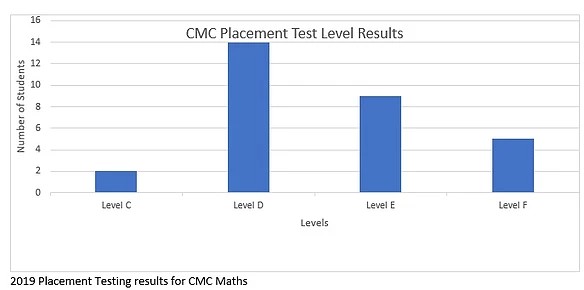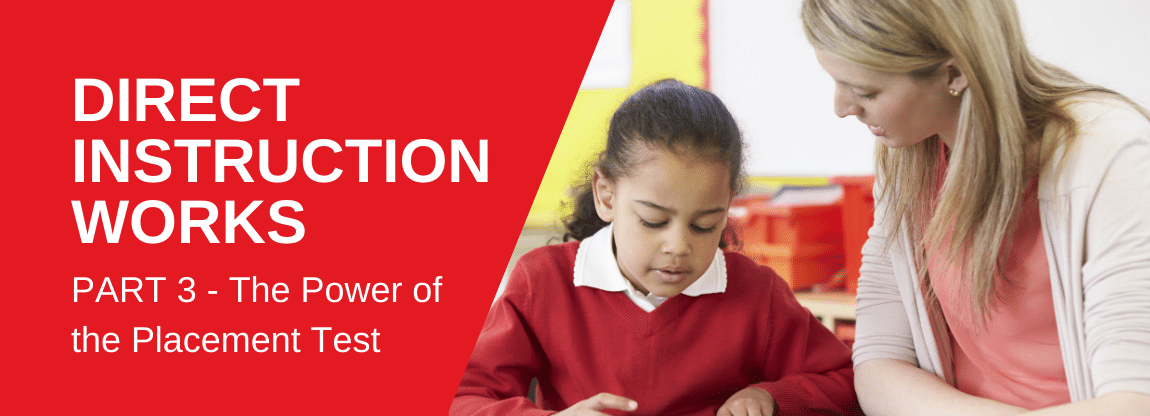Direct Instruction Works – Part 3, The Power of the Placement Test
Written by Kevin Surrey BEd | NIFDI, Director of Direct Instruction (Maths), Direct Instruction South Hub, UK.
Re-posted and published with kind permission of Kevin Surrey and the Direct Instruction South Hub Team. Find out more about the work of Kevin and his team at: https://www.direct-instruction.co.uk/
In the third and final instalment of this insightful blog, find out why the Placement Test is the crucial starting point for any DI implementation.
The Placement Test
So how do we answer this question of what is the correct DI starting point, well as I have suggested the answer is the ‘Placement Test.’ Ideally, this would be done on a transition day when children are still in Year 6 and preparing to make the leap from Primary School to Secondary School. The Placement tests for both maths and reading are very specific in enabling children to be given an accurate level at which to start. This method is very precise as the administrator of the tests follows a flow chart relating to the students ability to answer the questions in the Connecting Maths Concepts test or in the case of reading, based on the number of errors a student makes and the words per minute that a student can read.
The flow chart is used and is based on the outcomes of the tests leading the administrator to the final level for each student. The Maths placement test is probably easier to administer as it can be done as a whole class exercise while the reading placement tests are done on a one to one basis. Placement tests are also carried out using a fully scripted teacher student dialogue which enables students to experience for the first time what a DI lesson is like.


This graph illustrates how the lowest 30 attaining students in Year 7, from their SATs data and who were given Placement Tests in 2019 and the distribution of them into the different Connecting Math Concepts Levels. As we could only run one DI class, we needed to select the students who needed the most support to make up the class. The mode level clearly showed as D, so we selected the 14 students from this level plus we included the two students who were at the level below C. This made up a class of 16 students and it is clearly evident that they would need to be working at CMC Level D. Obviously having my two C Level students in that class is not ideally what you need but justifying a class of just two students is not viable and they would be sat in front of me and given that extra support in my lessons.
So, analysing the data that the placement test gives you is the most accurate and precise way of answering the question, 'What package should I buy?' The point being emphasised here is that I could have compared the content in Level F to be more in line with the core curriculum standards for Year 7 or looked at the content of Level D and thought my goodness this is to easy and bought into a package not aligned with the children's particular needs. The placement testing is very clear in highlighting where the students have the gaps in their knowledge and buying the correct package to fill those gaps is vital.
The Power of the Placement Test
Nonetheless, in an eagerness to start up programmes of work, some schools are buying packages blind without conducting these powerful placement tests. In 2019, I could have had sixteen children working through a Level F programme that has been so brilliantly put together but would have been lost on the class missing the vital ingredients from the previous levels that allow them to access the work and therefore be in none the wiser for the experience. The power of the placement test will not only benefit schools financially but more importantly allows for the specific assessment to help teachers in set up their class, give the children a sample of what DI is like and allow them to begin to experience the chanting and delivery of the DI lesson.
I will finish with another film analogy from Star Wars, ‘Never underestimate the Power of the Placement Test.’
Placement Tests for all DI programs are available to download from our website at https://www.mheducation.com.au/schools/direct-instruction
Find out more about Connecting Maths Concepts on our website at:
https://www.mheducation.com.au/schools/numeracy/connecting-math-concepts?efr
If you would like to connect or comment on this blog post, please send an email to schools_anz@mheducation.com. This in-box is monitored regularly, and we will respond as soon as possible to your email.

